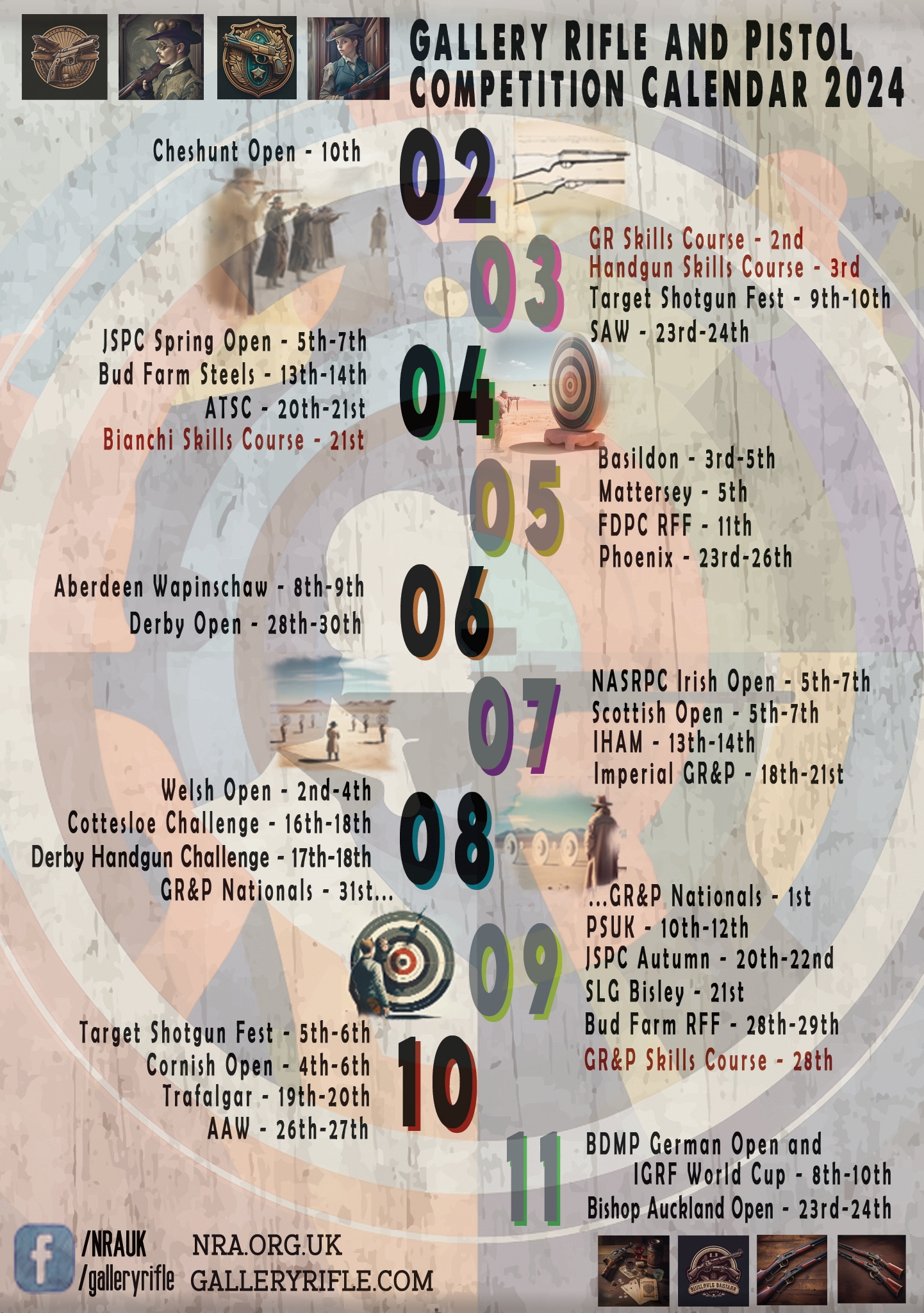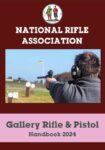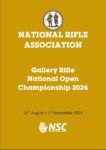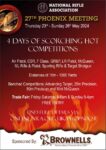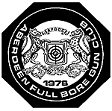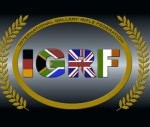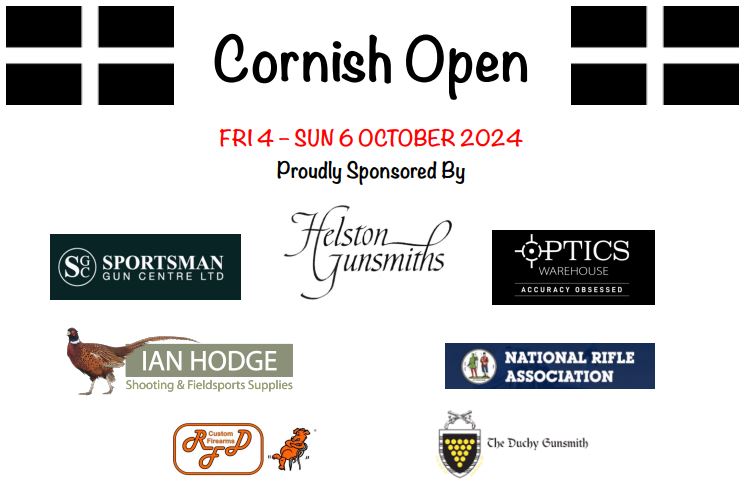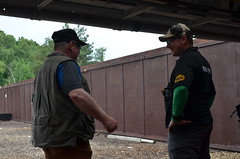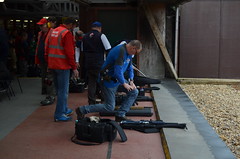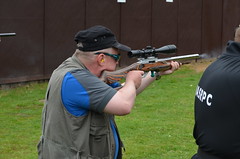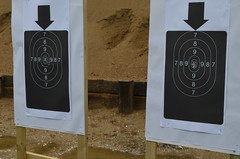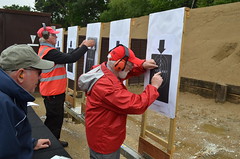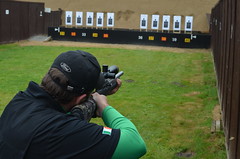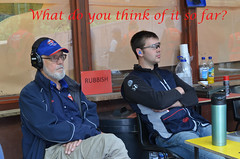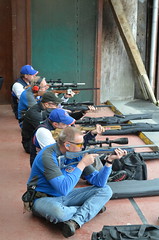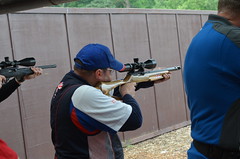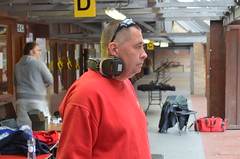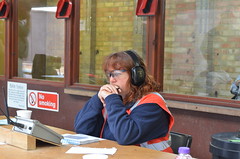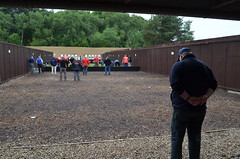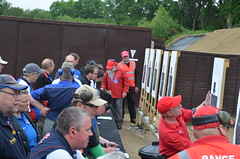Round the Barricade
It may seem we are obsessed with barricades and shooting around them (hopefully not through them) but they do form a fairly major part in events such as Bianchi, 1500 and the T&P2 and 3 matches.
On the range (any range) we generally use posts, mainly for pragmatic reasons in the likes of 1500 and T&P. In these events any use of the word ‘barricade’ is essentially translated in real life to a post. In fact it states in the rule book the barricade should be “a wooden post of square or rectangular section and at least 100mm square and 2m in height“.
The point of the barricade is competitors shoot around it. Elsewhere we have already discussed foot fault lines and the fact that these should be perpendicular to the appropriate offside edge of the barricade. Equally the front facing edge of the barricade – the side facing the targets – also represents the ‘foot’ fault line. No part of the competitors body may pass the front face of the barricade.
A mentioned use of a real life post on the range is representative. Imagine shooting to the left hand side of this barricade as illustrated above. In this case the “barricade” actually extends to the right of the shooter like a wall or barrier. Ditto when the competitor is shooting on the right hand side – it extends to the left.
What is the point being made? Well – it has been noticed some competitors are making use of the fact that the barricade is being provisioned as a square post and are wrapping their non shooting arm around the post to be able to grab the barrel or other part of the pistol or revolver when shooting. This breaks the rules anyway as part of their arm will be forward of the fault line which is the leading edge of the post. However it also breaks the spirit of what the post is representing.
I’m afraid this rule will be clarified and enforced next season. Anybody who has got into the habit of making use of this style of shooting has the winter to readjust.
Comments – as always – welcome.
